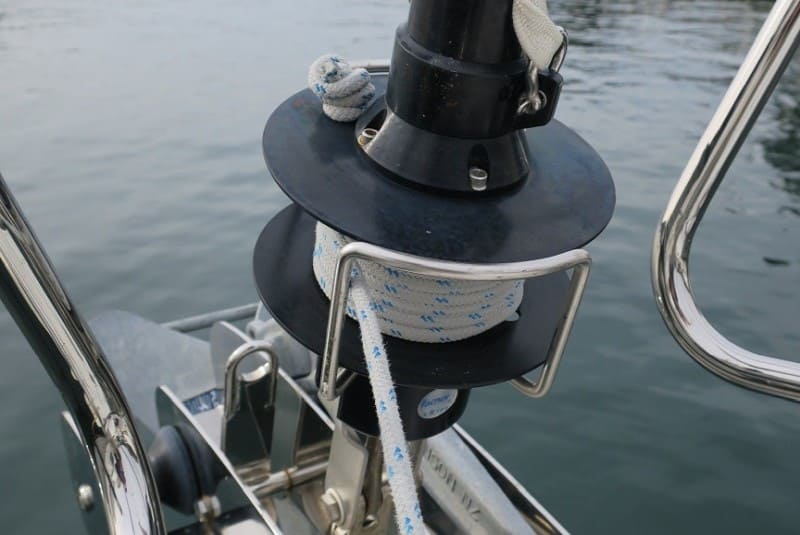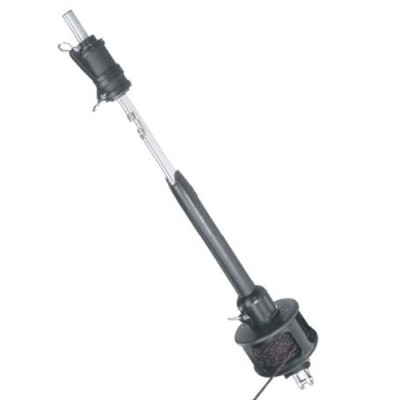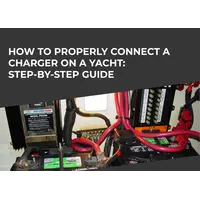We tell you how to choose a furling system for sailboats, what types of such systems exist, what are their advantages and disadvantages.
Sailing Problems?
On a cruising yacht, the number of "working hands" is normally limited: there are usually no more than two crew members on watch. But there are yachts on which the entire crew consists of four or even three people, not to mention those desperate brave men (or madmen) who take on long voyages alone! Meanwhile, working with sails takes a lot of time and effort.

Any significant change in the speed and direction of the wind or the course of the yacht forces you to change the sails. If you, for example, will not be able to finish cleaning a huge genoa on time, not have enough time to reef or remove the mainsail, then a wind flurry flying in could rupture the sail or even break the mast. Couldn’t lay down and fasten the lowered mainsail on the boom in time - the wind will ruffle it, part of the sail may end up overboard and then it will be difficult to “tame” it.
If you add that at the same time, sometimes for a long time, crew members working with sails have to be outside the cockpit, on the open deck, often during a large heel and roll, that is, in far from always safe conditions, then we can safely say: any improvement aimed at speeding up and simplifying sail operations will be useful, save time and effort, and most importantly - make sailing safer.
What devices for facilitating the setting and cleaning of sails and reducing their area can be offered to yachtsmen sailing on cruising racers and tourist yachts?
One of these devices is the sail furling system.
Who Solved the Problem and How
The glory of the invention of the first furling system belongs to the Englishman (who would doubt it) Major E du Boulay, who lived at the end of the 19th century. For the reliable operation of the staysail, he sewed a wooden rail into the luff, which later became known as the headstay pier. It rotated, winding the sail over itself, with the help of a line wound around a cylinder. At the beginning of the next century, Wykeham-Martin, a compatriot of Boulay, included roller bearings and a drum with cheeks in this spinning system. By the middle of the century, such a twist was already on display on many cruising yachts. After some improvements in the 60s, the furling system acquired the form familiar to modern sailors.
The very idea of changing the sail area due to the twisting of the sail was received with a bang by marine engineers. In modern yachting, the staysail furling system has spread to other sails: gennaker, mainsail, and even straight sails. Devices appeared that retracted the sail into the mast or into the boom.
Benefits of a Furling System
As far back as the 19th century, sailors of sailing ships appreciated all the advantages that this invention of Boulay provided them.
Modern yachtsmen know from their own experience that properly selected sail furling systems allow:
- promptly reduce or increase the sail area in accordance with the meteorological specifics in the navigation region;
- significantly simplify the management of sails, reduce the physical effort expended;
- reduce the number of crew members involved in the management of a sailing vessel;
- it is easy to manage a small sailboat on a voyage by yourself;
- significantly increase the comfort and safety of sailing;
- reduce the overall load on the spars in dangerous situations.
Types of Roller Furling Systems
The roller furling system makes it easier to control the front sail, its deployment and tension adjustment. The furler for the staysail is an example of the most common type of this system. It allows the helmsman to adjust the sail from the cockpit without the need for a large crew or excessive fuss on deck. At the same time, the skipper, using the furling system, can quickly reef the front sail in bad weather.

A roller furler is a system of spindles that can be rotated through a cable to achieve the furling of the sail around the halyard. Modern yachts no more than half a century old do not even require forestay upgrades to install a roller furling system, the most common types of which are:
- with the head swivel - ideal for universal use, the most popular;
- with the wire luff - ideal for headsails, cheaper than the head swivel;
- with the internal halyard - the most resource efficient.
Let us dwell in more detail on these three main types of furling systems for sailboats.
The Head Swivel Furling System
This is the most popular one because it is easy to install and operate and it’s quite reliable. The installation is standard with fastening immediately behind the stay and using a staysail halyard.
The head swivel includes a drum that sits at deck level and a smaller diameter spindle that attaches behind the top of the staysail. Ball bearings provide easy and smooth rotation.
The sail is attached to a wire halyard and then to a larger spindle - a drum at the base of the system. A cable is connected to the drum, which goes from the eye placed on the deck to the cabin.
If sailing conditions require the front sail to be unwound, untie the staysail hoist and pull the staysail sheet to turn the sail. To reef the sail, do the opposite: pull on the staysail, releasing the staysail sheet.
With the help of this system, you can act very quickly, moreover, it is intuitive and simple. Therefore, the system head swivel is often used on racing and cruising sailboats. The only downside of this product is its price, but as they say, you get what you pay for.
The Wire Luff Furling System
This furling system is most suitable for small sailing craft such as coastal cruisers. The installation of this type of furling does not impose requirements on the type of sail, since the system is universal, it can be used on a yacht with several types of front sails.
For offshore navigation, it is not reliable enough, especially in strong winds - it is impossible to reef the staysail. In addition, the sails sag a little, because the wire luff does not provide the necessary lateral support.
They are also not suitable for racing and offshore cruising, as they cannot withstand the loads. In other conditions, they can be successfully used.
Boaters appreciate this furling system for its ease of installation and operation. Installing this system does not require any changes to the sails and rigging.
Another important advantage: the wire luff models are half the price of the head swivel.
The Internal Halyard Furling System
To install this system, an existing forestay is used – that’s where it’s unique. The spindle drum, through which the forestay passes, belongs to the bottom-up furling system. Due to the location of the drum on the forestay, the deck is more convenient for movement, even though in this system the drum is larger than in other systems. The fact is that, compared to the wire luff and the head swivel, the spindle drum system of the internal halyard model is located further.
Advantages of the internal halyard system are the reliability and at the same time smaller price compared to head swivel ones. They do not overload the space on the boat, you don’t have to pick up special sails for them. They are simpler in design, have fewer parts and rarely break.
All of the above explains their popularity among skippers who equip the yacht for offshore navigation.
But keep in mind that with this product it is difficult to reef the sail in strong winds, as is the case also with the wire luff. The skipper will need to be able to handle standing rigging and manage tension on the halyard.
How to Calculate Furler Size for Spinnaker and Code 0
The choice of the furler for the so-called flying sails depends on several parameters: the length and type of boat (single-hull or multi-hull), area and type of sail, displacement. Depending on these parameters, the maximum working load in kg that the spinning system can withstand is selected. You can use a ready-made table.
| 0,9 t | 1,5 t | 2,5 t | 5,0 t | 7,0 t | 8,0 t | 12,0 t | |
|---|---|---|---|---|---|---|---|
| Boat length, m | 6-9 | 9-12 | 12-13.5 | 13-15 | 15-21 | 20-23 | 21 |
| Sail area, m² | 35 | 60 | 80 | 150 | 250 | 300 | 350 |
| Boat displacement, kg | 2800 | 5000 | 8500 | 15000 | 18000 | 19000 | 20000 |
| Safe workload, kg | 900 | 1500 | 2500 | 5000 | 7000 | 8000 | 12000 |
Frequently Asked Questions FAQ
What are two types of furling?
Initially, all spin systems were ascending, that is, directed from the bottom up. In modern times, this system is perceived as traditional and is often used for the staysail and genoa. In such a system, the drum is spun at the base of the sail. When folding, the sail begins to twist also from the base.
The top down furler is a more recent development for the Code 0 and asymmetric spinnakers.
What size are furling lines?
Usually, you want the cable with anti-torsion and the correct length - the quality of the twisting system depends on this. To get the number, you should accurately measure the length of the luff of your sailboat, as well as the height of the lower reel and the upper swivel with a carabiner. Add 0.6 m to the total sum for clamps and thimbles and you get your size.
What is a top-down furler?
A furling system for more efficient placement of Code 0 sails and asymmetric spinnakers that has recently been developed. With this system, the winding of the sail starts from above and goes to the base, which is not connected to the drum, but is constantly in a free state.
Can you reef a furling mainsail?
The furling mainsail reefs even easier than the furling jib because it has no carriages. It also has reef markers that you can follow to reef the mainsail to the first reef, second reef and so on. To go on reef up, wind the mainsail furler and release the mainsheet until you are satisfied with the result. To go down a reef, you need to follow the reverse process: wind the mainsail and release the mainsheet until the mainsail covers the area you need.
Another thing is that the leech of the furling mainsail is not shaped as a sickle, since it cannot be equipped with non-furlable battens. Therefore, for the convenience of sail control, you have to pay with losses in aerodynamics.
If you have any questions about furling system for sale, contact the marketplace experts. The topRik team are practicing yachtsmen and ardent sailing sport lovers. They will help you choose the ideal furler for your type of sailboat.








